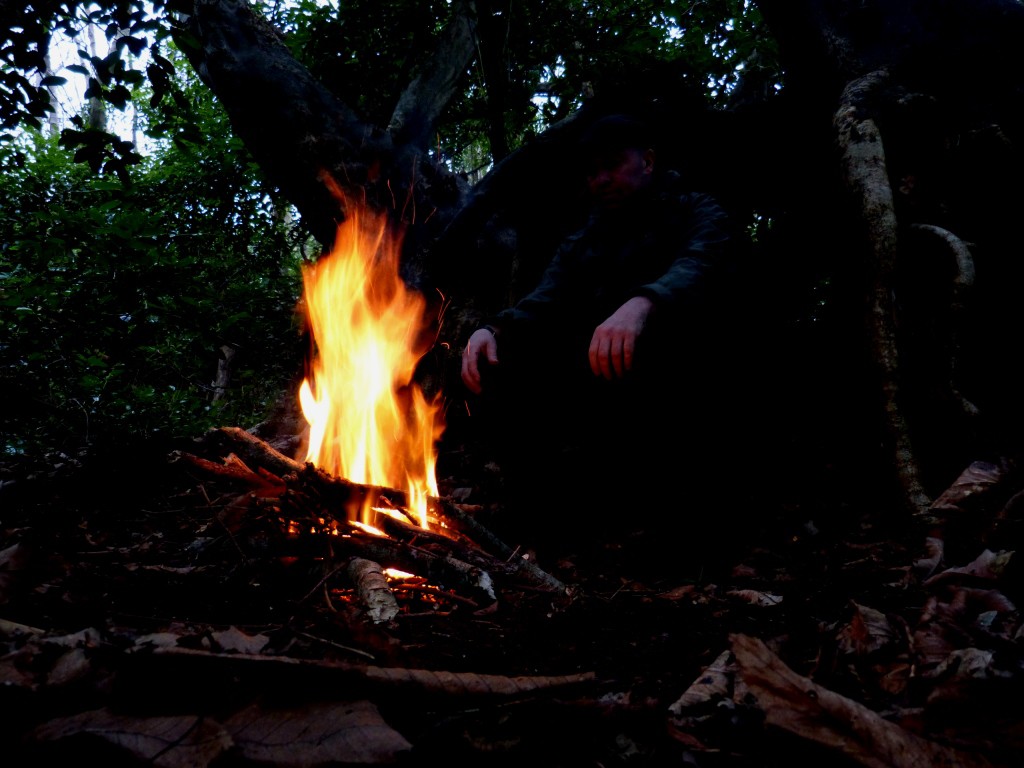By Sean Fagan

When travelling through or living in wild places with minimal gear, it's often of crucial importance to know how to get a campfire going - even when time is short supply. In photo, I got this fire going just before nightfall, after a day of hiking. I lit this campfire atop a small fire trench - as the soil was very damp. The trench certainly helped in getting my fire well established (Photo: Sean Fagan - Ireland, Feb/2017).
.
.
When making your next camp fire, maybe try the following...
With the heel of your foot, dig a SHORT TRENCH into the soil - about the length of your foot and about 3 inches wide (7.6cm). Make sure to align the trench with the wind (parallel, not perpendicular, to the wind). It doesn't have to be deep - about 2-3 inches (5 - 7.5cm) will do.
Then place your fire-base of mostly thumb-thick, dead dry branches over the trench (see photo above).
Next, carefully arrange your tinder and kindling over your fire-base and you are ready to go.
.
This little trick will greatly improve the combustibility of your camp-fire mostly because of unimpeded oxygen flow under your fire (oxygen being a crucial factor in igniting fires).
Try it. It really works well on damp ground too, as it raises your fire-base above the damp soil.
Also, the trench coalesces fire-coals - meaning the coals burn hotter and longer!
Fire-trenches are often presented in the bushcraft literature for sleeping on - as a body-length trench into which a fire is burned (with the hot embers being eventually covered with soil...slowly releasing heat to warm the sleeping individual above).
But fire-trenches can have multiple uses - such as improving the fire-lighting success of a camp-fire.
However, you can make multiple variations of the this simple trench described in this post.
You can, for example, make an trench in the shape of a cross - that way, if the wind changes direction (which it often does outdoors, especially in the woods) there will always be a steady flow of air under the campfire.
My favourite is a gently sloping, bowl-shaped depression made in the soil (about 12 inches/30cm in diameter and 2-3inches deep). A fire-pit of sorts. This really coalesces the embers, making them burn exceptionally hot.
With a fire pit, heat is radiated out on all sides and there is a constant inflow of air, regardless of wind direction (apparently many tribes of the First Nation People of North America favoured the fire pit).
.
But the simplest, quickest way to improve air flow under a camp-fire is the simple fire trench described in this post.
Takes about 10 seconds to create with the heel of my boot - that's all - and almost instantly I've got a significant, fire-lighting edge.
And sometimes you need those little edges when the weather turns sour, or time is tight, or you're a little chilled - or you're just plain tired and need to get a fire going quickly and efficiently as possible.
.
.
Related articles on this website:.
*Check us out on Instagram, Twitter & Facebook for more outdoor-related topics.
Recent Comments